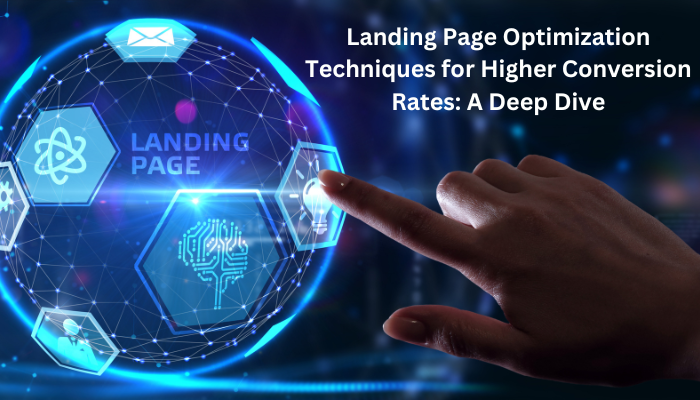
Landing Page Optimization Techniques for Higher Conversion Rates: A Deep Dive
March 6, 2024 Comment off
In the digital marketing landscape, landing pages are the silent persuaders. They are the pivotal points where a visitor’s interest is transformed into action, making their optimization crucial for boosting conversion rates. As we delve into 2024, the competition for user attention has intensified, necessitating a blend of creativity, psychology, and technology to design landing pages that convert. This article explores the latest techniques in landing page optimization, focusing on A/B testing, user experience (UX), and call-to-action (CTA) optimization, to help you stay ahead in the game.
Understanding the Core of Landing Page Optimization
At its heart, landing page optimization is about creating a seamless, engaging, and persuasive user journey that aligns with the visitors’ intentions and your business goals. It’s a continuous process of testing, learning, and refining to discover what resonates best with your audience.
A/B Testing: The Experimentation Powerhouse
A/B testing, or split testing, remains a cornerstone of landing page optimization. It involves comparing two versions of a landing page (A and B) to see which one performs better on a specific conversion goal. Here’s how to leverage A/B testing effectively in 2024:
- Start with Hypotheses: Base your tests on data-driven hypotheses. Use analytics, user feedback, and heatmaps to identify areas for improvement.
- Test One Element at a Time: Whether it’s the headline, CTA button color, or form length, changing one element at a time helps isolate the impact of that change.
- Use the Right Tools: Tools like Optimizely, VWO, or Google Optimize can simplify the process of creating, running, and analyzing tests.
- Consider Statistical Significance: Ensure your test results are statistically significant to make informed decisions. This often means running the test until you have a large enough sample size.
Enhancing User Experience (UX) for Conversion
User experience on landing pages goes beyond aesthetics. It’s about how easily and pleasantly users can navigate and achieve their goals. Here are key UX elements to optimize:
- Page Speed: A fast-loading page is essential. Even a second’s delay can significantly reduce conversions. Use tools like Google’s PageSpeed Insights to identify and fix bottlenecks.
- Mobile Optimization: With mobile traffic surpassing desktop, your landing page must be responsive and mobile-friendly.
- Clarity and Simplicity: Keep your messaging clear and your design uncluttered. Use bullet points, short paragraphs, and relevant images to break up text and convey your message effectively.
- Trust Signals: Include testimonials, reviews, and security badges to build trust with your visitors.
Call-to-Action (CTA) Optimization: The Final Push
Your CTA is the climax of your landing page; it’s what converts a visitor into a lead or customer. Optimizing your CTA involves:
- Visibility: Place your CTA where it’s easily seen, ideally above the fold and within the visitor’s natural reading flow.
- Design: Use contrasting colors and large, legible fonts to make your CTA stand out.
- Copy: Be specific and action-oriented. Instead of “Submit,” say “Get Your Free Ebook” or “Start Your Free Trial.”
- Urgency and Scarcity: Phrases like “Limited Offer” or “Only a Few Left” can create a sense of urgency and prompt quicker action.
Continuous Learning and Optimization
The digital landscape is ever-evolving, and so are the behaviors and preferences of your audience. Embrace a culture of testing, learning, and iterating. Keep abreast of the latest UX/UI trends, technological advancements, and consumer insights to continually refine your landing pages.
Landing page optimization is an art and science that demands a deep understanding of your audience and a commitment to continuous improvement. By focusing on A/B testing, enhancing user experience, and optimizing your call-to-action, you can significantly increase your conversion rates. Remember, the goal is not just to attract visitors but to convert them into engaged customers. Dive deep into these techniques, and watch your conversion rates soar in 2024 and beyond.